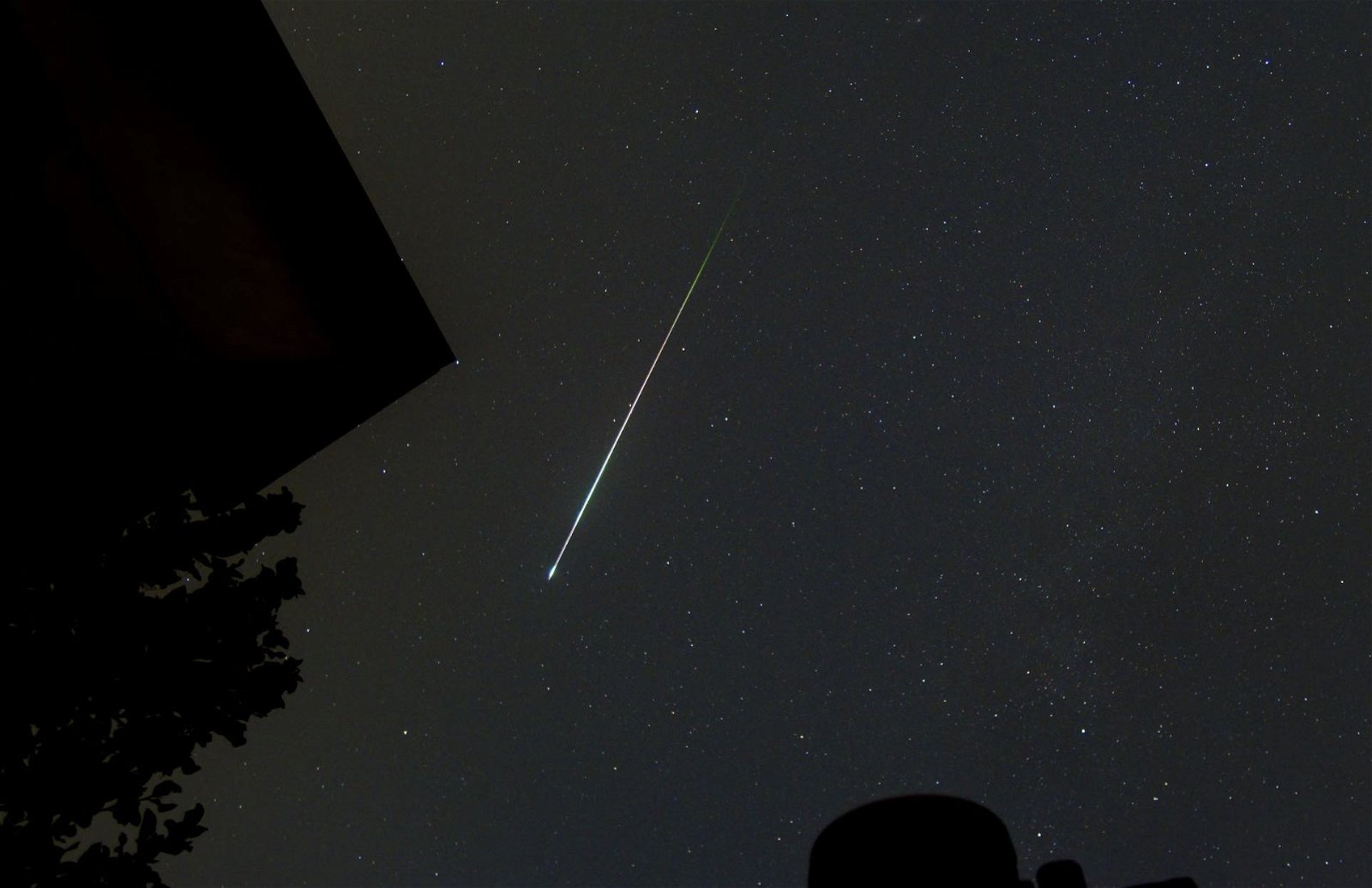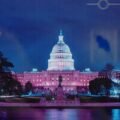On Friday, October 20, 2023, at 7:43:20 PM Eastern Time, the advanced set of microphones of the Galileo Project observatory at Harvard University recorded a mystery sound. The signal did not resemble the sounds of birds, aircraft, or wind, which were recorded many times before. No source was identified by our infrared and optical cameras.
The acoustic monitoring, omni-directional system (AMOS) of the Galileo Project is a passive, multi-band, microphone suite designed to aid in the detection and characterization of aerial phenomena. Acoustic monitoring augments the Project’s cameras by providing an independent signal with which to validate the identification of known and unknown phenomena.
With it, the nonstop movie of the sky includes both images and sound. The AMOS system spans infrasonic frequencies down to 0.05 Hertz, all audible frequencies, and ultrasonic frequencies up to 190 kilohertz. It uses three distinct systems with overlapping bandwidths: infrasonic (0.05–20 Hertz), audible (10 Hertz – 20 kilohertz), and ultrasonic (16– 190 kilohertz). The sensors allow AMOS to monitor the vast range of sounds produced by natural and human-made aerial phenomena, and to characterize novel sources.
Interestingly, natural selection favored the audible range for humans because low-frequency sounds carry little information due to their long wavelength, and high-frequency sounds are attenuated by the viscosity of air.
The brilliant Andy Mead, who designed and constructed the AMOS system, was puzzled by the mystery sound. He emailed me the following day:
Dear Avi,
Hope you’re having a great weekend! Per your request to alert you if we noticed anything anomalous on our sensors, I have a pretty intriguing update for you…
I started getting messages this morning about a “viral” sound that was heard throughout New England. Notably, the Mount Washington Observatory made a post about it as they had so many inquiries. That post now has over 4,000 reactions, 1,000 comments, and 751 shares, many of whom heard the sound and are following the story.
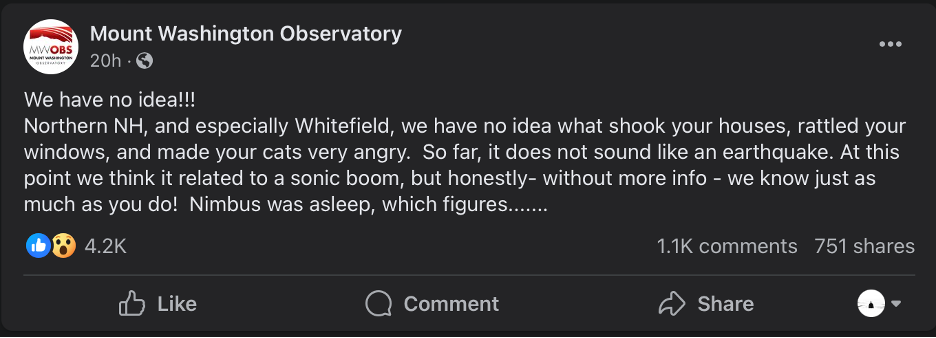

From the comment section, it’s pretty clear that this was heard across large distances (near Mount Washington, Boothbay Harbor Maine, Sturbridge MA, etc.) with significant strength and a consistent time window.
I checked the data and AMOS in-fact did capture a very interesting sound at 7:43 PM ET that lasted for 12 seconds.
Here is a spectrogram of 10 minutes with the mystery sound labeled. You can see aircraft on either side of the mystery sound and unfortunately it looks like there was an aircraft present during the mystery sound which makes ID’ing a bit tricky. I’ve created a box around the sound for your reference…
Thanks!
Andy
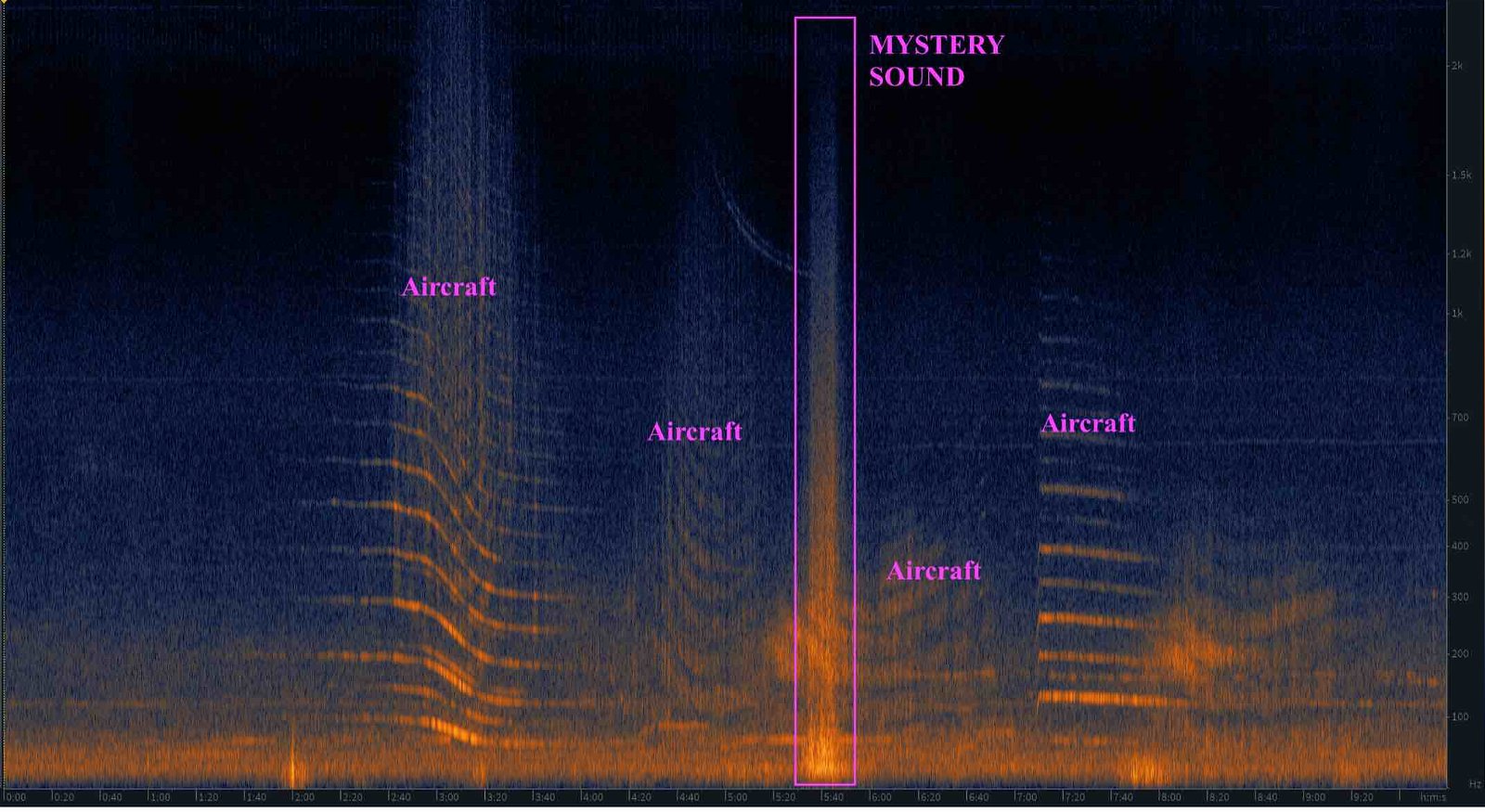

I was thrilled to receive Andy’s message.
Given the unresolved nature of the mystery sound, the Galileo Project team created a webpage to crowdsource reports from other locations that could constrain the distance of the mystery source.
The information we received from the public indicated a nearly simultaneous detection between Harvard University and New Hampshire, suggesting a very distant source – at least tens of miles away. Given the mission of the Galileo Project, one question came to mind: “Is this an Unidentified Anomalous Phenomenon (UAP)? Are aliens using advanced technologies near Earth?”
To figure out what is going on, I asked Andy to send me the measured numbers for the amplitude and duration of the pressure wave that AMOS detected. Andy reported back a peak pressure of a millionth of the atmospheric pressure at sea-level and a duration of 12 seconds for the pressure signal to drop to half its peak value. Within thirty minutes after receiving Andy’s numbers, I was able to derive the energy and distance of the explosion that likely generated the mystery sound.
The short duration of the signal suggested an impulsive energy source. A sudden release of energy within a small volume sends a blast wave through the Earth’s atmosphere. The strength of the pressure wave depends on the energy released and the distance of the explosion.
Characterizing blast waves of this nature was particularly urgent when the atomic bomb was developed during World War II. The British physicist G. I. Taylor was informed by the British Ministry of Home Security that it might be possible to produce a bomb in which a large amount of energy would be released by nuclear fission and in response he reported confidentially the effect of such a weapon on June 27, 1941.
Around the same time, the mathematician John von Neumann solved the problem in anticipation of the Manhattan Project in the US and presented his results on June 30, 1941. A young physicist named Leonid Sedov was also working on the problem around the same time in Russia and was first among the three physicists to publish the solution openly in 1946.
Remarkably, the solution was extremely simple. It maintained a constant radial profile for the pressure, density and velocity of the air, when normalized by the peak values at the front of the blast wave. This novel mathematical property of “self-similarity” reduced the complexity of solving the problem as a function of space and time to a single variable in units of the blast wave pressure, density, velocity, and radius. The blast wave properties as a function of time could simply be derived from dimensional analysis, given the energy and background density of air. Self-Similarity was extended by Sedov to other problems in a 1959 book.
I studied thoroughly the Taylor–von Neumann–Sedov solution for my Master thesis in 1984 on the topic, “Analytical Models for the Evolution of Strong Shock Waves Generated by High Irradiance Lasers in Solids and Fast Spark Discharges in Gases.” The background physics was summarized thoroughly in a remarkable two-volume book from 1966 by Yakov Zelʹdovich and Yuri Raĭzer, titled “Physics of Shock Waves and High-Temperature Hydrodynamic Phenomena”, which I read cover-to-cover before writing my first research paper.
Given this early training forty years ago, I was ready to use Andy’s numbers as soon as he sent them to me.
In the Taylor–von Neumann–Sedov solution, the blast wave is a spherical shell centered on the explosion site. The pressure drops to half its peak value over a shell width equal to about a tenth of the shell’s radius. By the time the mystery pressure wave arrived at the AMOS detector, it was weak and moving at the speed of sound of about 340 meters per second. Multiplying this speed by the duration of the pulse, 12 seconds, implies a shell width of 4 kilometers for the blast wave, implying a distance of about 40 kilometers from the explosion. At that distance, the measured pressure disturbance suggested an explosive energy release of 2.4 kilotons of TNT. The inferred energy and distance are reminiscent of meteors, which are known to make their own music at high altitudes. Was there a meteor shower that day?
Remarkably, the Orionid meteor shower peaked in Massachusetts on October 21, 2023. Given the characteristic speed of Orionid meteors, I calculated that the meteor had to be about a meter in diameter to produce the inferred energy of the explosion.
I scanned my notes (seen below) and sent them to Andy and the Galileo Project team:
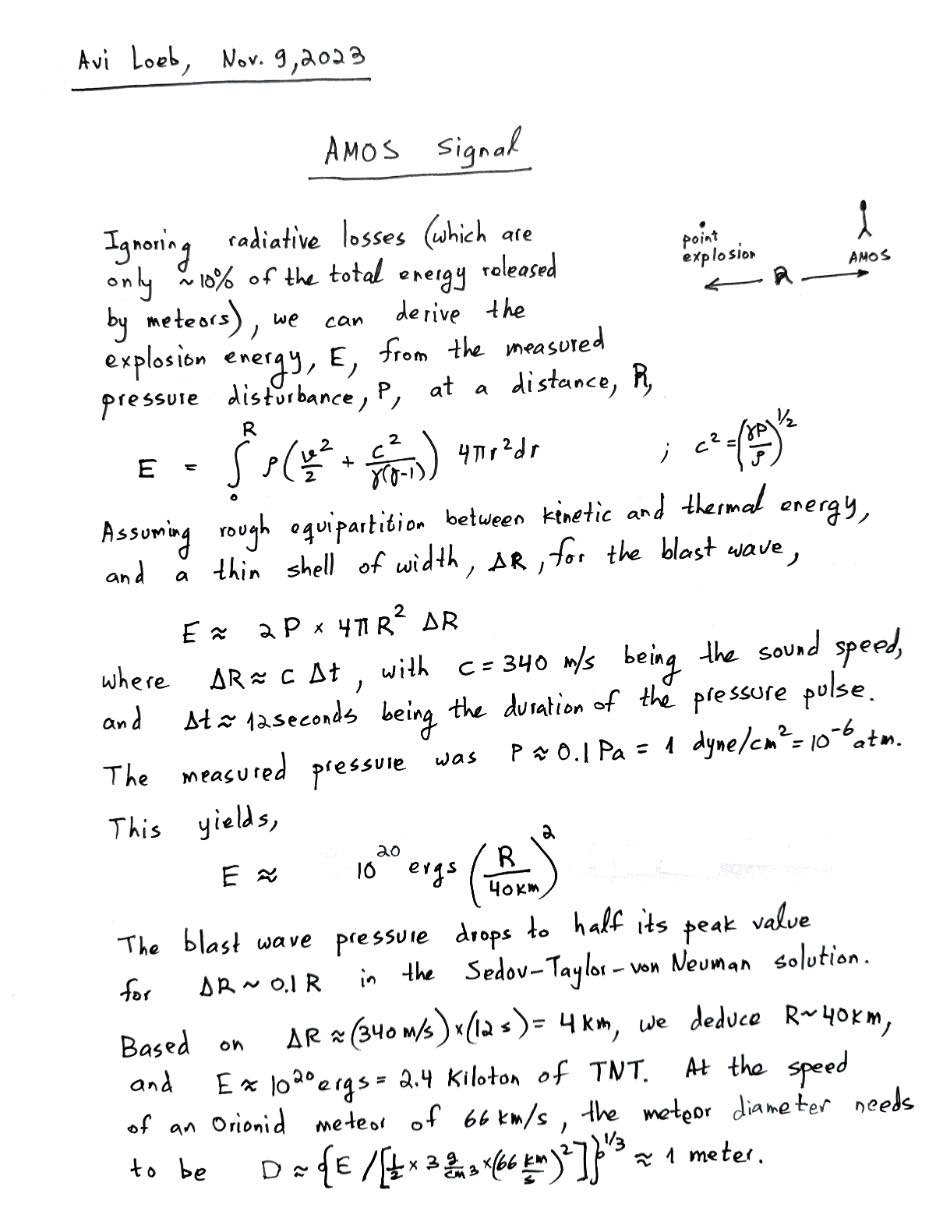

Mystery solved!
Avi Loeb is the head of the Galileo Project, founding director of Harvard University’s – Black Hole Initiative, director of the Institute for Theory and Computation at the Harvard-Smithsonian Center for Astrophysics, and the former chair of the astronomy department at Harvard University (2011-2020). He chairs the advisory board for the Breakthrough Starshot project, and is a former member of the President’s Council of Advisors onScience and Technology and a former chair of the Board on Physics and Astronomy of the National Academies. He is the bestselling author of “Extraterrestrial: The First Sign of Intelligent Life Beyond Earth” and a co-author of the textbook “Life in the Cosmos”, both published in 2021. His new book, titled “Interstellar”, was published in August 2023.
